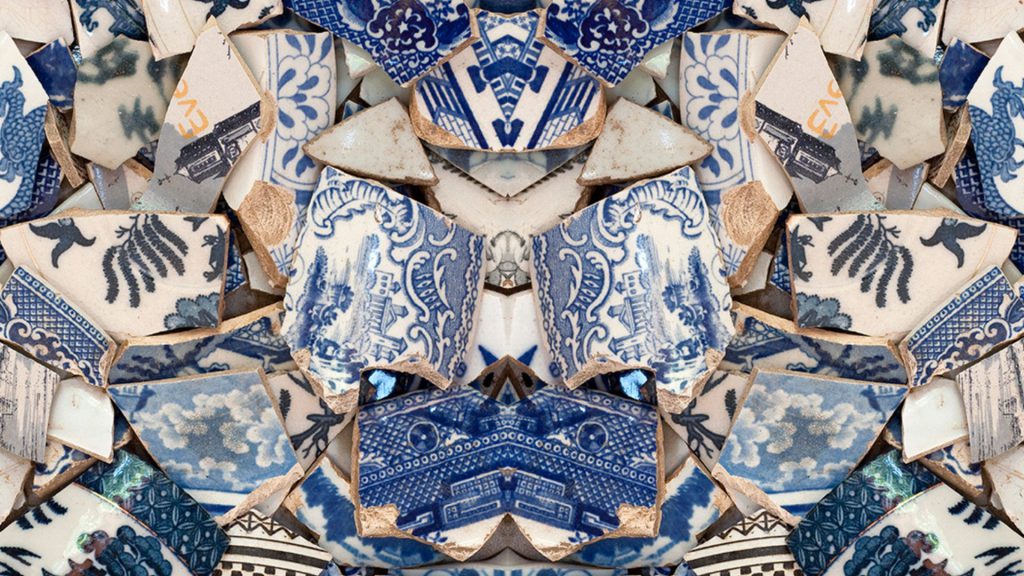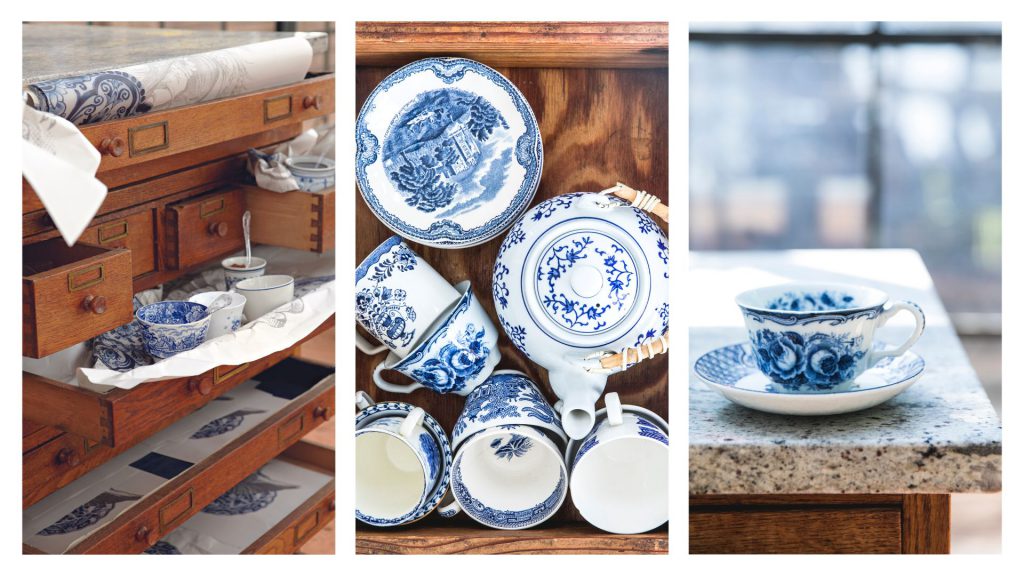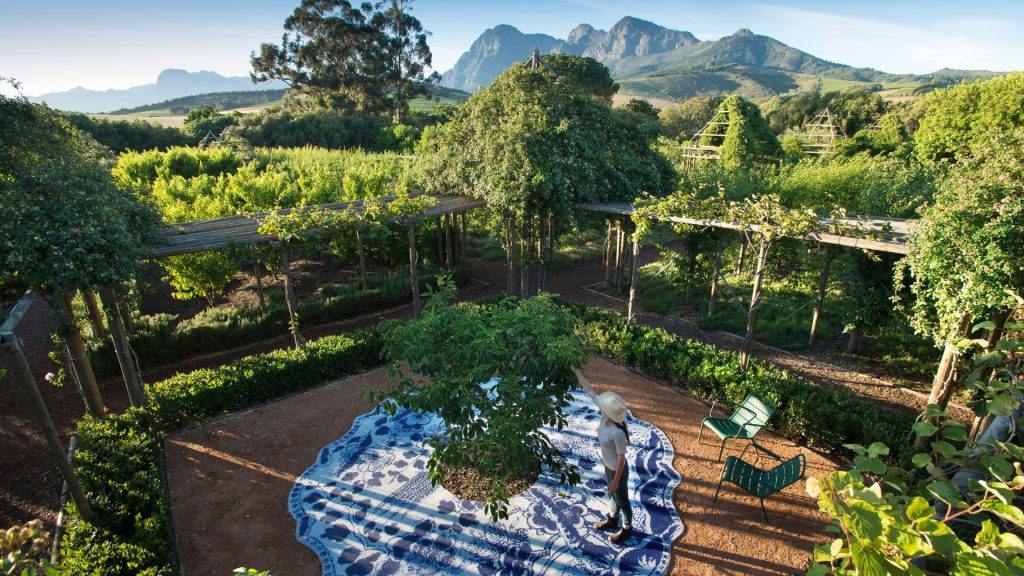
Restaurants
Spa
Day Visits
Shop
Functions
16°C
February 28th, 2023
Babylonstoren’s garden holds many treasures – from heirloom fruit varieties and a pebbled water spiral to secret shady spots and shards of blue china.

While working in the garden, our gardeners regularly unearth shards of discarded blue china crockery from different centuries. We’ve played with this blue-and-white heritage in different ways on the farm. In a restroom, a Delft plate print has been laid into a wall of metro tiles; near Babel Restaurant, the blue china shards collected on the farm are displayed under glass; in the Greenhouse, our tablemats have a Delft design; and in the citrus block, a few persimmon trees have been framed with a blue-and-white mosaic plate. But what do these fragments tell us about the farm’s history and the people who lived here?

Blue china, Delft, faience, blue porcelain, pearlware, bone china – these blue-and-white beauties are known by many names. Originally produced in China’s imperial kilns more than 1000 years ago, true porcelain was extremely rare and hardly found outside the emperor’s palace.

As the spice trade grew, Europeans quickly became fascinated with the delicate porcelain and its detailed designs. The signature blue hand-painted designs on pure white were entirely new – cobalt pigment was the only colour that could withstand firing temperatures as high as 1800°C.
Soon, everyone started replicating the sought-after dinnerware for the who’s who of European society – from Dutch craftsmen who started producing tin-glazed earthenware Delft (known as the “poor man’s porcelain”) and Japanese artisans making imari porcelain, to British ceramicists with bone china and pearlware. As hard as they tried, they couldn’t crack the closely guarded secret of the original until centuries later.
To the trained eye, the differences between real porcelain and its imitations are easily distinguished with a lick of the tongue (no kidding!). The rest of us are merely captivated by their beauty and fascinated by their stories.

At Babylonstoren, the pieces of blue china we’ve unearthed vary greatly in age and origin. Many of them have been collected along the stream near the Manor House and cycad garden, and could have been household ceramics discarded there. “The first place to look for artefacts like porcelain would be near streams,” says historical archaeologist and heritage practitioner Antonia Malan. The inhabitants may have discarded them for various reasons, thinking the stream will take them away.
During the 17th century, the Cape of Good Hope was a convenient halfway point between the East and West. The trade of porcelain between the two worlds is revealed in the shards collected by our gardeners – from authentic export porcelain that the VOC ordered from China to the later tin-glazed earthenware Delft and the mostly British refined earthenware with transfer printed decorations that are a legacy of the British occupation.
Whatever secrets these shards of history guard, the iconic blue and white has many stories to tell.
